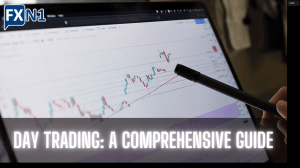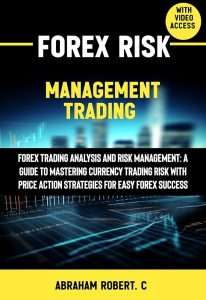A Comprehensive Guide to Forex Trading
Unlock the secrets of Forex trading! Master fundamental & technical analysis, risk management, and practical trading strategies. Start your Forex journey today and conquer the market!
The foreign exchange market, or Forex, presents a dynamic and potentially lucrative opportunity for investors worldwide. Understanding its complexities, however, is crucial for success. This comprehensive guide will equip you with the knowledge and skills necessary to navigate this exciting but challenging market. We’ll explore fundamental and technical analysis, risk management strategies, and practical trading techniques to build a solid foundation for your Forex trading journey.
Understanding the Forex Market
The Forex market is a decentralized global marketplace where currencies are traded against each other. Unlike traditional stock markets with centralized exchanges, Forex operates 24 hours a day, five days a week, across various global financial centers. This constant liquidity offers traders numerous opportunities, but also demands vigilance and adaptability. The market’s size and global reach contribute to its volatility, creating both risks and rewards.
Major Currency Pairs and Their Dynamics
Forex trading involves trading currency pairs, such as EUR/USD (Euro/US Dollar) or USD/JPY (US Dollar/Japanese Yen). Each pair’s value fluctuates based on various economic and geopolitical factors. Understanding the relationship between these factors and currency movements is essential for effective trading. For instance, interest rate changes in a particular country can significantly impact its currency’s value against others. Furthermore, political instability or major economic announcements can cause significant price swings.
Fundamental Analysis in Forex Trading
Fundamental analysis examines the underlying economic factors that influence currency values. This includes analyzing economic indicators like inflation rates, interest rates, Gross Domestic Product (GDP) growth, and government debt. By understanding these factors, traders can make informed predictions about future currency movements. For example, a rising interest rate in a country often strengthens its currency relative to others with lower rates. This is because higher rates attract foreign investment, increasing demand for the currency.
- Interest Rates: A key factor influencing currency values.
- Inflation Rates: High inflation can weaken a currency.
- GDP Growth: Strong economic growth typically strengthens a currency.
- Government Debt: High levels of debt can weaken a currency.
- Political Stability: Political uncertainty can negatively impact a currency.
Technical Analysis: Charting Your Course
Technical analysis focuses on interpreting price charts and historical data to identify patterns and predict future price movements. Traders utilize various technical indicators, such as moving averages, relative strength index (RSI), and candlestick patterns, to identify potential entry and exit points. While fundamental analysis looks at the “why” behind price movements, technical analysis focuses on the “what” – the price action itself. This approach allows traders to identify trends, support and resistance levels, and potential reversal points.
Key Technical Indicators and Their Applications
Moving averages smooth out price fluctuations, helping traders identify trends. RSI measures the momentum of price changes, helping identify overbought or oversold conditions. Candlestick patterns provide visual representations of price action, offering clues about potential future movements. Mastering these indicators requires practice and experience. It’s important to combine technical analysis with fundamental analysis for a more holistic trading strategy. Relying solely on one method can be risky.
Chart Patterns and Their Significance
Recognizing chart patterns, such as head and shoulders, double tops and bottoms, and triangles, can provide valuable insights into potential price reversals or continuations. These patterns are formed by price action over time and can signal upcoming changes in market sentiment. However, it’s crucial to remember that chart patterns are not foolproof predictors and should be used in conjunction with other analytical tools. Confirmation from other indicators or fundamental analysis is often necessary before entering a trade based on a chart pattern alone.
Risk Management: Protecting Your Capital
Effective risk management is paramount in Forex trading. It involves implementing strategies to minimize potential losses and protect your trading capital. This includes setting stop-loss orders to limit potential losses on each trade, determining appropriate position sizing based on your account balance, and diversifying your portfolio across different currency pairs. Never invest more than you can afford to lose.
Stop-Loss Orders and Their Importance
Stop-loss orders automatically close a trade when the price reaches a predetermined level, limiting potential losses. This is a crucial risk management tool that protects your capital from significant drawdowns. Setting appropriate stop-loss levels requires careful consideration of your risk tolerance and the market’s volatility. A well-placed stop-loss order can prevent substantial losses and preserve your trading capital for future opportunities;
Position Sizing and Diversification Strategies
Position sizing refers to determining the appropriate amount of capital to allocate to each trade. It’s crucial to avoid over-leveraging, which can amplify both profits and losses. Diversification involves spreading your investments across multiple currency pairs to reduce the impact of any single trade’s outcome. A diversified portfolio is more resilient to market fluctuations and reduces overall risk.
Trading Strategies and Techniques
Successful Forex trading often involves employing specific strategies and techniques tailored to individual trading styles and risk tolerance. These strategies range from scalping, which involves holding positions for very short periods, to swing trading, which involves holding positions for several days or weeks. Each strategy has its own advantages and disadvantages, and selecting the right one depends on your trading goals and risk appetite. Thorough research and practice are essential before implementing any trading strategy.
Scalping and Day Trading Techniques
Scalping focuses on profiting from small price movements over short periods. This strategy requires quick decision-making and a keen understanding of market dynamics. Day trading involves opening and closing positions within the same trading day, aiming to capitalize on intraday price fluctuations. Both strategies require high levels of concentration and discipline.
Swing Trading and Long-Term Strategies
Swing trading involves holding positions for several days or weeks, aiming to profit from larger price swings. This strategy requires a longer-term perspective and a thorough understanding of fundamental and technical analysis. Long-term strategies, on the other hand, involve holding positions for months or even years, aiming to capture significant long-term trends. Patience and discipline are key to success with these approaches.
- Backtesting: Testing strategies on historical data.
- Paper Trading: Simulating trades without real money.
- Risk Management: Prioritizing capital preservation.
- Discipline: Sticking to your plan, even during losses.
- Continuous Learning: Staying updated on market trends.
Forex trading presents a world of opportunity, but it’s crucial to approach it with a well-defined strategy, diligent risk management, and a commitment to continuous learning. The market’s volatility requires adaptability and resilience. Success in Forex trading is a journey, not a destination. It requires dedication, discipline, and a willingness to learn from both successes and failures. Consistent effort and a commitment to self-improvement are essential for long-term success. Remember that losses are inevitable, but learning from those losses is key to improving your trading performance. With patience, perseverance, and a sound understanding of the market, you can increase your chances of achieving your financial goals. This comprehensive training program is designed to provide you with the tools and knowledge to embark on this challenging yet rewarding journey.







